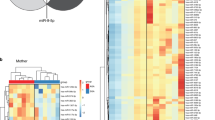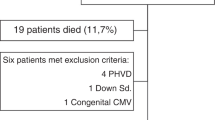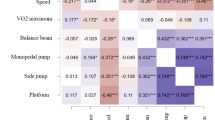Abstract
We compared sex-specific growth attainment of a population-based cohort of 147/166 (89%) extremely low birthweight (ELBW < 1000 g) and 131/145 (90%) sociodemographically comparable normal birthweight (NBW) cohort at young adulthood, and examined the pattern of growth trajectories and correlates of growth at ages 1, 2, 3, and 8 y, and teen and young adulthood (mean age, 23.3 versus 23.6 y). The proportion considered small for gestational age was ELBW 25% versus NBW 3%; and 26% versus 2% had neurosensory impairments. Weight for age z-scores for ELBW showed substantial decline to age 3 y, with subsequent significant catch-up to adolescence and smaller gains to adulthood. Height for age z-scores showed both sexes of ELBW were disadvantaged at every age compared with NBW and their expected mid-parental height. The BMI z-scores for ELBW showed a sustained incline from age 3 to adulthood, where both sexes normalized to above zero, and were comparable to their peers. ELBW children showed growth failure during infancy, followed by accelerated weight gain and crossing of BMI percentiles at adolescence, a pattern that may increase the risk of insulin resistance and coronary heart disease. However, normalization of BMI for both sexes at adulthood suggests that final growth was proportionate.
Similar content being viewed by others
Log in or create a free account to read this content
Gain free access to this article, as well as selected content from this journal and more on nature.com
or
Abbreviations
- ELBW:
-
extremely low birth weight
- NSI:
-
neurosensory impairments
- SGA:
-
small for gestational age
- VLBW:
-
very low birth weight
- YA:
-
young adulthood
References
Finnstrom O, Otterblad Olausson P, Sedin G, Serenius F, Svenningsen N, Thiringer K, Tunell R, Wesstrom G 1998 Neurosensory outcome and growth at three years in extremely low birthweight infants: follow-up results from the Swedish national prospective study. Acta Paediatr 87: 1055–1060
Hack M, Weissman B, Borawski-Clark E 1996 Catch-up growth during childhood among very low birthweight children. Arch Pediatr Adolesc Med 150: 1122–1129
Wood NS, Costeloe K, Gibson AT, Hennessy EM, Marlow N, Wilkinson AR, EPICure Study Group 2003 The EPICure study: growth and associated problems in children born at 25 weeks of gestational age or less. Arch Dis Child Fetal Neonatal Ed 88: F492–F500
Powls A, Botting N, Cooke RW, Pilling D, Marlow N 1996 Growth impairment in very low birthweight children at 12 years: correlation with perinatal and outcome variables. Arch Dis Child Fetal Neonatal Ed 75: F152–F157
Ford GW, Doyle LW, Davis NM, Callanan C 2000 Very low birth weight and growth into adolescence. Arch Pediatr Adolesc Med 154: 778–784
Saigal S, Stoskopf BL, Streiner DL, Burrows E 2001 Physical growth and current health status of infants who were of extremely low birth weight and controls at adolescence. Pediatrics 108: 407–415
Ericson A, Källen B 1998 Very low birthweight boys at the age of 19. Arch Dis Child Fetal Neonatal Ed 78: F171–F174
Hack M, Schluchter M, Cartar L, Rahman M, Cuttler L, Borawski E 2003 Growth of very low birth weight infants at age 20 years. Pediatrics 112: e30–e38
Cooke RW 2004 Health, lifestyle, and quality of life for young adults born very preterm. Arch Dis Child 89: 201–206
Doyle LW, Faber B, Callanan C, Ford GW, Davis NM 2004 Extremely low birth weight and body size in early adulthood. Arch Dis Child 89: 347–350
Saigal S, Rosenbaum P, Hattersley B, Milner R 1989 Decreased disability rate among 3-year-old survivors weighing 501 to 1000 grams at birth and born to residents of a geographically defined region from 1981 to 1984 compared with 1977 to 1980. J Pediatr 114: 839–846
Hollingshead AS 1975 Four Factor Index of Social Status. Yale University, New Haven, CT
Saigal S, Szatmari P, Rosenbaum P, Campbell D, King S 1991 Cognitive abilities and school performance of extremely low birth weight children and matched term control children at age 8 years: a regional study. J Pediatr 118: 751–760
Boyle MH, Offord DR, Hoffman HG, Catlin GP, Byles JA, Cadman DT, Crawford JW, Links PS, Rae-Grant NI, Szatmari P 1987 Ontario Child Health Study 1: methodology. Arch Gen Psychiatry 44: 826–831
Ware JE, Kosinski M 2001 SF-36 Physical and Mental Health Summary Scales: A Manual for Users of Version 1, 2nd Ed. QualityMetric Inc, Lincoln, RI
Kramer MS 16, Platt RW, Wen SW, Joseph KS, Allen A, Abrahamowicz M, Blondel B, Breart G for the Fetal/Infant Health Study Group of the Canadian Perinatal Surveillance System 2001 A new and improved population-based Canadian reference for birth weight for gestational age. Pediatrics 108: E35; www.pediatric.org/cig/content/full/108/2/e35
Kuczmarski RJ, Ogden CL, Grummer-Strawn LM, Flegal KM, Guo SS, Wei R, Mei Z, Curtin LR, Roche AF, Johnson CL 2000 CDC growth charts: United States. Adv Data Jun 8: 1–27
Nellhaus G 1968 Head circumference from birth to eighteen years. Practical composite international and interracial graphs. Pediatrics 41: 106–114
Boyle MH, Willms JD 2001 Multilevel modeling of hierarchical data in developmental studies. J Child Psychol Psychiatry 42: 141–162
Rasbash J, Browne W, Goldstein H, Yang M, Plewis I, Healy M, Woodhouse G, Draper D, Langford I, Lewis T 2000 A User's Guide to MlwiN, Version 2.1. Institute of Education, London
Holm S 1979 A simple sequentially rejective multiple test procedure. Scand J Statist 6: 65–70
Barker DJ, Winter PD, Osmond C, Margetts B, Simmonds SJ 1989 Weight in infancy and death from ischaemic heart disease. Lancet 2: 577–580
Fewtrell MS, Doherty C, Cole TJ, Stafford M, Hales CN, Lucas A 2000 Effects of size at birth, gestational age and early growth in preterm infants on glucose and insulin concentrations at 9-12 years. Diabetologia 43: 714–717
Finken MJ, Inderson A, Van Montfoort N, Keijzer-Veen MG, Van Weert AW, Carfil N, Frolich M, Hille ET, Romijn JA, Dekker FW, Wit JM, on behalf of the Dutch POPS-19 Collaborative Study Group 2006 Lipid profile and carotid intima-media thickness in a prospective cohort of very preterm subjects at age 19 years: effects of early growth and current body composition. Pediatr Res 59: 604–609
Irving RJ, Belton NR, Elton RA, Walker BR 2000 Adult cardiovascular risk factors in premature babies. Lancet 355: 2135–2136
Singhal A, Fewtrell M, Cole TJ, Lucas A 2003 Low nutrient intake and early growth for later insulin resistance in adolescents born preterm. Lancet 361: 1089–1097
Bhargava SK, Sachdev HS, Fall CH, Osmond C, Lakshmy R, Barker DJ, Biswas SK, Ramji S, Prabhakaran D, Reddy KS 2004 Relation of serial changes in childhood body-mass index to impaired glucose tolerance in young adulthood. N Engl J Med 350: 865–875
Eriksson JG, Forsen T, Tuomilehto J, Osmond C, Barker DJ 2001 Early growth and coronary heart disease in later life; longitudinal study. BMJ 322: 949–953
Cianfarani S, Germani D, Branca F 1999 Low birthweight and adult insulin resistance: the “catch-up growth” hypothesis. Arch Dis Child Fetal Neonatal Ed 81: F71–F73
Ehrenkranz RA, Younes N, Lemons JA, Fanaroff AA, Donovan EF, Wright LL, Katsikiotis V, Tyson JE, Oh W, Shankaran S, Bauer CR, Korones SB, Stoll BJ, Stevenson DK, Papile LA 1999 Longitudinal growth of hospitalized very low-birth-weight infants. Pediatrics 104: 280–289
Acknowledgements
The authors thank the ELBW and NBW young adults and their parents for their cooperation with our many studies. We also thank our research staff, Liz Merz (for tracing the subjects), Lorraine Hoult and Mary Lou Schmuck (for statistical analysis), Diane Turcotte (for typing the manuscript), and Dr. Stephanie Atkinson for her advice. We appreciate the support of the department of Pediatrics and the Children's Hospital, McMaster University, Hamilton, ON, Canada.
Author information
Authors and Affiliations
Corresponding author
Additional information
This study was supported by grants MOP42536 from the Canadian Institutes of Health Research and 1 RO1 HD40219 from the National Institute of Child Health and Human Development.
Rights and permissions
About this article
Cite this article
Saigal, S., Stoskopf, B., Streiner, D. et al. Growth Trajectories of Extremely Low Birth Weight Infants From Birth to Young Adulthood: A Longitudinal, Population-Based Study. Pediatr Res 60, 751–758 (2006). https://doi.org/10.1203/01.pdr.0000246201.93662.8e
Received:
Accepted:
Issue date:
DOI: https://doi.org/10.1203/01.pdr.0000246201.93662.8e
This article is cited by
-
Body composition in adults born preterm with very low birth weight
Pediatric Research (2023)
-
Postnatal growth and body composition in extremely low birth weight infants fed with individually adjusted fortified human milk: a cohort study
European Journal of Pediatrics (2023)
-
Health-Related Quality-of-Life Outcomes of Very Preterm or Very Low Birth Weight Adults: Evidence From an Individual Participant Data Meta-Analysis
PharmacoEconomics (2023)
-
Impact of very preterm birth and post-discharge growth on cardiometabolic outcomes at school age: a retrospective cohort study
BMC Pediatrics (2021)
-
Critical examination of relationships between early growth and childhood overweight in extremely preterm infants
Journal of Perinatology (2021)



